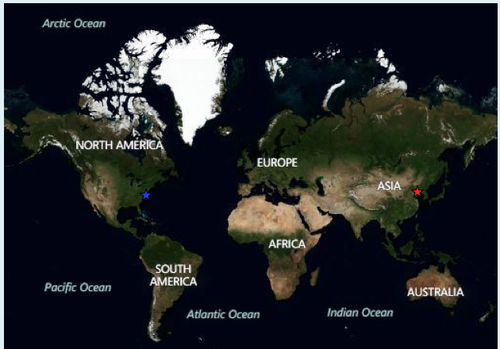- Wed 30 January 2013
- Cartographica
- Rick Jones
- #Add Features, #Live Maps
Live Maps can be used for many purposes. On this blog we have highlighted the use of Live Maps for georeferencing images, identifying geological features, and providing context to local area studies. Another useful purpose of Live Maps is locating objects that are tied to specific places. What does that mean? It means we can look at places where we expect things to occur and make observations at those locations. In addition to making observations and identifying objects we can also use Cartographica to analyze what we see.
If you have followed this blog at all you might have notice that I have a light obsession with all things military. Part of the reason is that military objects (especially naval) make interesting maps. Over time I have determined the locations of several interesting military ships and before Bing Maps gets updated I wanted to provide a look at these locations while also conducting some analysis and highlight a few of the functions of Cartographica. Below are a few descriptions of some of the most recent additions to the United States and Chinese Navies.
The U.S.S. Gerald R. Ford (CVN 78)
The U.S.S. Gerald R. Ford is the newest addition of the U.S. Navy Aircraft Carrier and is the first ship in the new Gerald R. Ford Class of supercarrier. The new carrier comes at a cost of $13.5 billion and it includes numerous improvement over past classes of carriers. One of the biggest improvements is the aircraft launch system which moves from steam power to electromagnets. Like other nuclear powered carriers the GRF will have an unlimited service range for a period of 25-30 years and will only need to come to port for supplies and regular maintenance. The ship is being built by Huntington Ingalls Industries in Newport News, VA. Below is an image of the port where the ship is being constructed. Like a game of ISpy, do you see the ship?
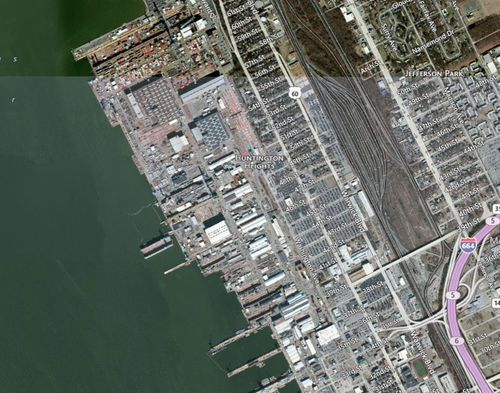
To highlight the location of the of the GRF add a new feature by choosing Layer > New Layer and then Edit > Add Feature. Select to add a polygon feature and then trace the outline of the ship.
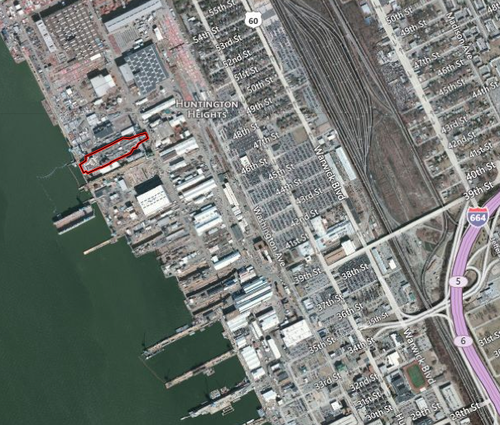
A closer look at the U.S.S. Gerald R. Ford under construction.
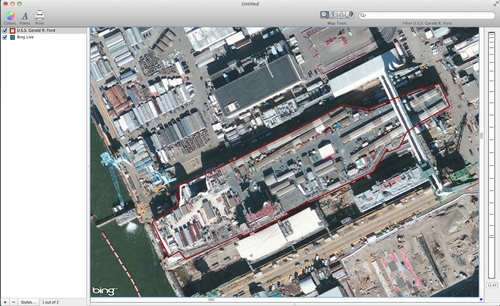
Chinese Aircraft Carrier: Liaoning
Recently the Chinese military acquired an 67,500 ton Soviet era aircraft carrier and has spent the past several years refurbishing and upgrading the ship to make it battle ready. Last November, China landed its first plane on the surface of the Liaoning. See this CNN video of the plane landing. Below is an image of Dailan, China where the Liaoning has been under construction for several years (its has completed tests in the Yellow Sea). Again, like a game of ISpy, do you see the ship?

We can again create a new feature to show the location of the ship choose Layer > New Layer and then Edit > Add Feature. Select to add a new polygon feature and then draw the outline of the ship.
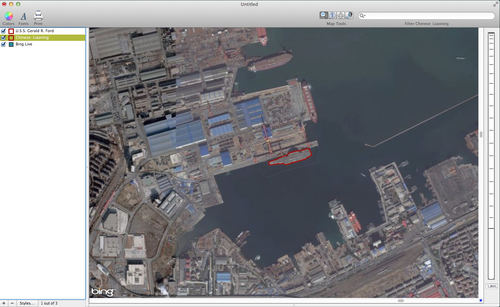
A closer look:
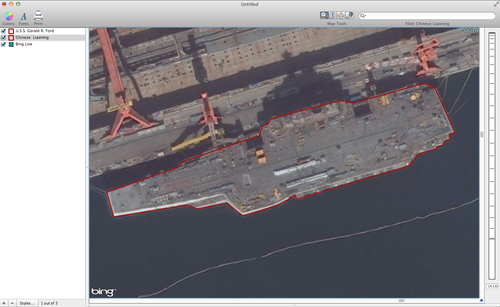
Based on the polygons that we have create we can use Cartographica's table tools to help enhance what we know about the ships. First, add a new area column to each of the new polygons so that we can see the size of each ship's deck space. To add the area column choose Tools > Add Area Column. Based on this analysis the Gerald R. Ford has a deck space of 32,356 square meters and the Lioaning has a deck space of 27,494 square meters. Also, we can add polygon coordinate columns which will give us the coordinates for each of the ships. To add coordinate columns choose Tools > Add Centroid Coordinate Columns. The final map below shows the general location of the ships.
